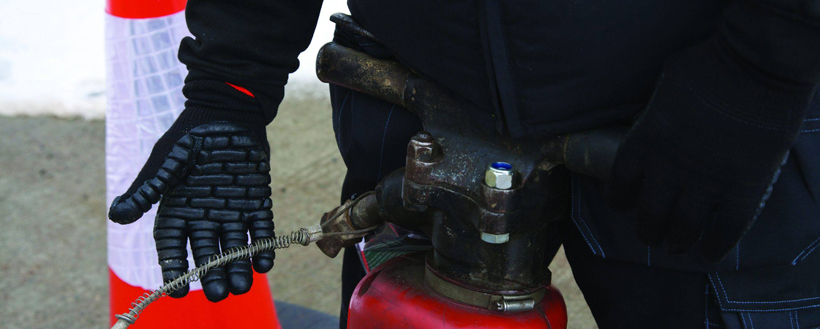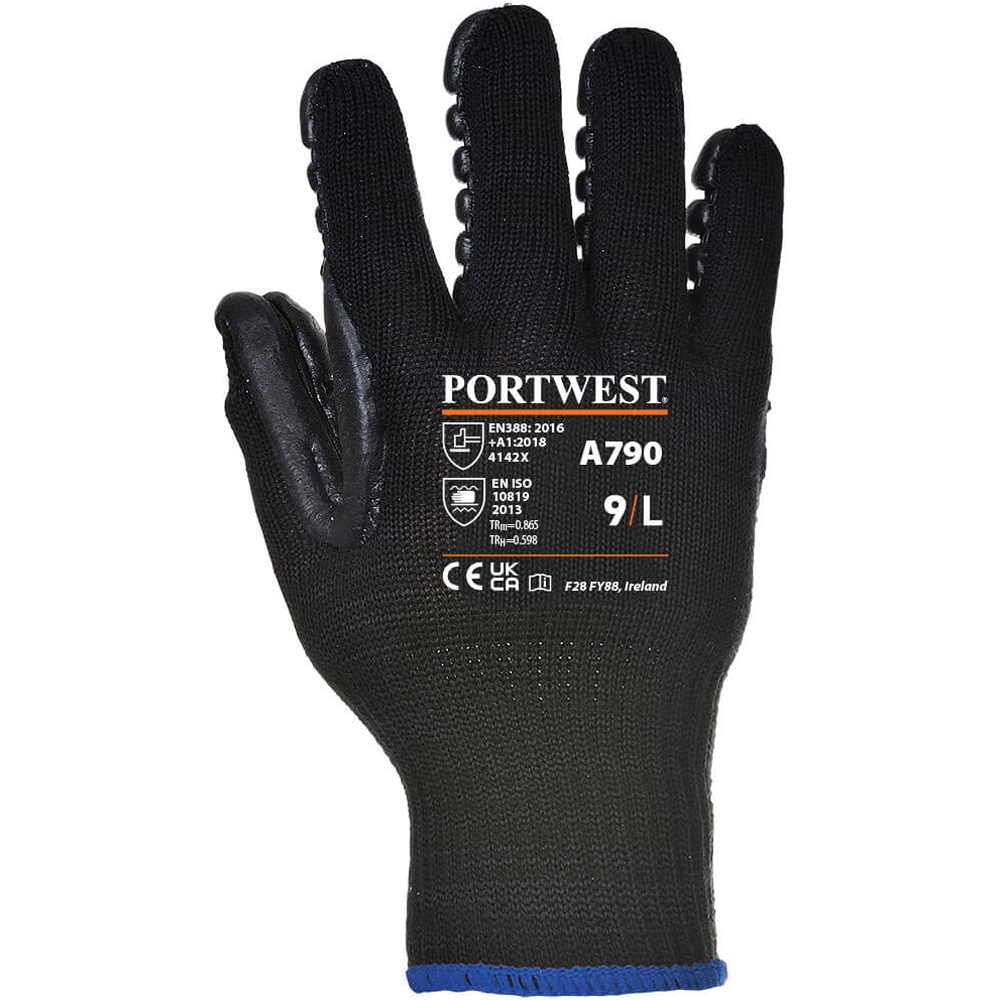Mechanical Vibration & Shock (10819)28 April 2023 | Admin
What is EN ISO 10819?EN ISO 10819 is the standard which specifies the requirements for gloves to protect against vibrations. When working with any equipment producing vibration exposure such as jackhammers, chipping & paving breaker tools, electric hammers etc, users will experience vibration transmission from the tool handle to the palms of the hands hence the reason for wearing anti vibration gloves. EN ISO 10819 sets out the requirements used to analyse the ‘vibration transmissibility’ of gloves i.e., the ability of a glove to protect the users’ hands from vibrations within a frequency range of 31.5 Hz to 1250 Hz. The two classifications of EN ISO 10819The standard further stipulates that within this frequency range there are 2 classifications which measure the performance of Anti Vibration gloves; ‘Medium Frequency’ and ‘High Frequency’ consistent with the range parameters defined below: TRM: Transmissibility Medium (M) 31.5 HZ – 200 HZ TRH: Transmissibility High (H) 200 HZ – 1250 HZ For a glove to comply with the requirements of EN ISO 10819, it must satisfy both the medium and high frequency requirements as outlined below: Medium frequency range - When the glove is tested in the medium range, the standard clearly stipulates that the glove must not amplify the vibrations – i.e., the TRM must be ≤ 1.0 for the glove to pass the standard. High frequency range - When the glove is tested in the high frequency range the glove must reduce vibration levels by at least 40% – i.e., the TRH must be ≤ 0.6 for the glove to pass the standard. EN ISO 10819 at Total Workwear
In this example product, the EN 10819 safety standard has the TRm and the TRh in brackets after it. The transmissibility medium value is 0.865 and the transmissibility high value is 0.598. According to the information above, when tested in the medium range, the TRm must be below 1.0 and when tested in the high range, the TRh must be below 0.6. Therefore, we can clearly see that this glove meets the requirements for both frequency ranges and it does properly conform to EN ISO 10819.
S U M M A R YMechanical vibration and shock resistant gloves can be one of the most useful items of workwear if you are working with power tools, jack hammers or concrete breakers. To give a summary of how the EN ISO 10819 is tested, each anti-vibration glove is tested within two frequency ranges. These frequency range are transmissibility medium (31.5 HZ - 200 HZ) and transmissibility high (200 HZ - 1250 HZ). When the gloves are tested, they must not amplify the vibrations that it's given in the medium range (below or equal to 1.0) and in the high range, it must reduce the vibration levels by at least 40% (below or equal to 0.6). If you are looking for anti-vibration gloves, look out for the 10819 safety standard in the product detail.
|
|
 Items: 0 Total: £0.00 |


















